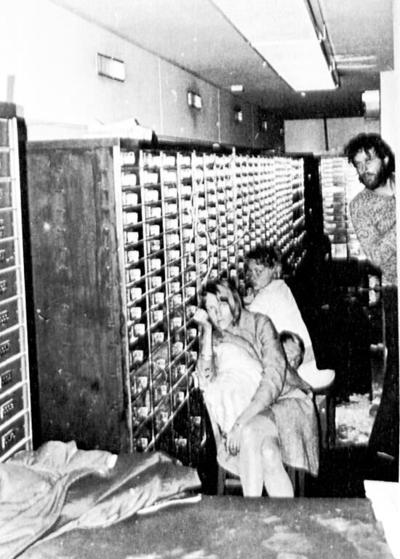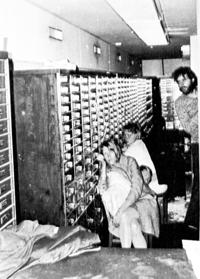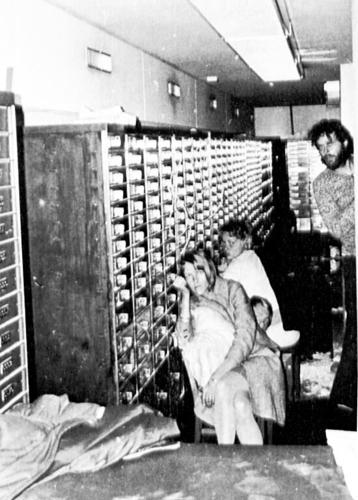STOCKHOLM (AP) — It's a common term these days, deployed to describe the bond that victims of kidnappings or hostage situations sometimes develop with their captors: “Stockholm syndrome.” And it got its name 50 years ago this week, during a failed bank robbery in Sweden's capital.
The Stockholm syndrome — initially dubbed “Norrmalmstorg syndrome,” after the square where the bank heist took place — has since been used in connection with hostage-takings around the world, including the in the 1970s.
Here’s a look at Stockholm syndrome and how it got its name.
WHAT IS STOCKHOLM SYNDROME?
It refers to the bond that can develop between hostages and their captors in hostage-taking and kidnapping situations. In some cases, hostages may develop sympathies for their captors and their cause — and even turn against the police. Rather than a diagnosis of a disorder, experts describe it as a psychological coping mechanism used by some hostages to endure being held captive and abused.
HOW DID IT GET ITS NAME?
The term can be traced back to Swedish criminologist and psychiatrist Nils Bejerot, who advised police in a standoff during a bank robbery in the Swedish capital in August 1973. During the standoff, some of the hostages appeared to side with the hostage-takers and against the police, a phenomenon Bejerot called “Norrmalmstorg syndrome.” Internationally, it became known as Stockholm syndrome.
Bejerot's daughter, Susanne says her father, who died in 1988, never thought the term would gain such traction worldwide. “He didn’t understand that it would become such a big thing,” she said Wednesday.
WHAT HAPPENED DURING THAT BANK ROBBERY?
On Aug. 23, 1973, convicted thief Jan-Erik Olsson, 32, tried to rob a bank in downtown Stockholm while on furlough from prison. Police responded quickly, and a standoff ensued.
Olsson, armed with a submachine gun, took four bank employees hostage and demanded 3 million kronor, a bulletproof vest and a getaway car. He also demanded that his former jail mate, Clark Olofsson, be released from prison and brought to the bank. Authorities agreed.
The drama played out on live television in Sweden as police tried to persuade Olsson and Olofsson to surrender. Even Prime Minister Olof Palme got involved in the negotiations.
At one point, a hostage, Kristin Enmark, told Palme over the telephone that she was afraid of the police, not of the two criminals. She appealed to authorities to meet their demands. Enmark later said she had developed a bond with Olofsson, whom she saw as the guarantor of her safety.
Two police officers were injured with gunshot wounds during the standoff, which ended on Aug. 28 when police, using tear gas, stormed the bank, arrested Olsson and Olofsson and freed the hostages.
WHAT ARE OTHER EXAMPLES OF STOCKHOLM SYNDROME?
One of the most well-known cases happened the following year, 1974, when Patty Hearst, the 19-year-old granddaughter of a wealthy newspaper magnate was kidnapped in the United States by the Symbionese Liberation Army, an unknown armed revolutionary group.
Two months later, questions concerning Hearst’s ties to her captors — and the notion of Stockholm syndrome — arose after Hearst declared her allegiance to the SLA, denounced her family and posed for a photograph carrying a weapon in front of the SLA flag. She was arrested in 1975 and was sentenced to seven years in prison. President Jimmy Carter commuted her sentence in 1979. She was later pardoned by President Bill Clinton.
Stockholm syndrome has also been applied in the context of victims of domestic violence or childhood sexual abuse who develop connections with their abusers.
REAL OR MYTH?
Stockholm syndrome isn’t listed as a diagnosis by the American Psychiatric Association’s Diagnostic and Statistical Manual of Mental Disorders or the International Statistical Classification of Diseases and Related Health Problems. Some experts question whether it’s a psychological condition at all or just a survival strategy — rational choices made by some people as they face extreme danger.
In the U.S. some law enforcement experts have said the phenomenon is rare and overpublicized by the media. But it still features frequently in popular culture, including books, films and music, and has entered the English lexicon as an informal term for people who forge unexpected bonds with others who treat them badly.
Stockholm syndrome inspired movies like the 2013 thriller “ ” with Kate Winslet, Josh Brolin and Gattlin Griffith and the 2018 film “ ” with Ethan Hawke and Noomi Rapace. The latter recounted the failed 1973 bank heist. It’s also the title of songs by bands including One Direction, Muse and Blink-182.
___
Olsen reported from Copenhagen, Denmark. AP Medical Writer Carla K. Johnson contributed from Washington state.









































